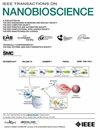Exploring the Antibacterial, Anticoagulant, and Hemolytic Potential of Green-Synthesized Fe2O3 Nanoparticles by Cucurbita pepo Pulp
IF 4.4
4区 生物学
Q1 BIOCHEMICAL RESEARCH METHODS
引用次数: 0
Abstract
Iron oxide nanoparticles (Fe2O3 NPs) were successfully Synthesized in a green manner using Cucurbita pepo pulp extract as a natural capping and reducing agent. UV-vis spectroscopy verified the synthesis with a distinct absorption peak at 285 nm, while FTIR analysis revealed functional groups responsible for reduction and stabilization. X-ray diffraction (XRD) analysis confirmed the crystalline nature of the nanoparticles, with an average size of 21.5 nm. SEM and EDX analyses further validated the nanoparticles’ spherical morphology and elemental composition. Biosynthesized IONPs exhibited notable antibacterial activity against multidrug-resistant bacterial strains such as Klebsiella pneumoniae and Pseudomonas aeruginosa. The inhibition zones ranged between 5–22 mm for Klebsiella pneumoniae and from 4 to 12 mm for Pseudomonas aeruginosa, depending on the concentration of the nanoparticles. Hematological evaluations demonstrated strong anticoagulant and thrombolytic properties. Iron oxide nanoparticles effectively inhibited blood coagulation at利用葫芦果肉制备绿色纳米Fe2O3的抗菌、抗凝血和溶血性能研究。
以葫芦果肉提取物为天然封盖还原剂,成功地绿色合成了氧化铁纳米颗粒(Fe2O3 NPs)。紫外可见光谱在285 nm处有一个明显的吸收峰,而红外光谱分析显示了负责还原和稳定的官能团。x射线衍射(XRD)分析证实了纳米颗粒的结晶性质,平均尺寸为21.5 nm。SEM和EDX分析进一步验证了纳米颗粒的球形形貌和元素组成。生物合成的IONPs对肺炎克雷伯菌和铜绿假单胞菌等多重耐药菌株具有显著的抗菌活性。根据纳米颗粒的浓度,肺炎克雷伯菌的抑制区在5-22毫米之间,铜绿假单胞菌的抑制区在4 - 12毫米之间。血液学评价显示其具有较强的抗凝和溶栓特性。当浓度为40 μg/mL时,氧化铁纳米颗粒能有效抑制血液凝固,当浓度为50 μg/mL时,氧化铁纳米颗粒能溶解预先形成的凝块,具有明显的溶栓活性。生物合成的IONPs具有显著的抗氧化活性,与标准离子相当。该研究强调了葫芦作为一种可持续和环保的合成多功能离子的资源的潜力。该研究结果表明,在解决抗生素耐药性和治疗血液相关疾病方面,该研究具有广阔的应用前景。此外,这些发现强调了绿色纳米技术在促进环境可持续和生物相容性纳米材料用于各种生物医学应用方面的关键作用。
本文章由计算机程序翻译,如有差异,请以英文原文为准。
求助全文
约1分钟内获得全文
求助全文
来源期刊

IEEE Transactions on NanoBioscience
工程技术-纳米科技
CiteScore
7.00
自引率
5.10%
发文量
197
审稿时长
>12 weeks
期刊介绍:
The IEEE Transactions on NanoBioscience reports on original, innovative and interdisciplinary work on all aspects of molecular systems, cellular systems, and tissues (including molecular electronics). Topics covered in the journal focus on a broad spectrum of aspects, both on foundations and on applications. Specifically, methods and techniques, experimental aspects, design and implementation, instrumentation and laboratory equipment, clinical aspects, hardware and software data acquisition and analysis and computer based modelling are covered (based on traditional or high performance computing - parallel computers or computer networks).
 求助内容:
求助内容: 应助结果提醒方式:
应助结果提醒方式:


